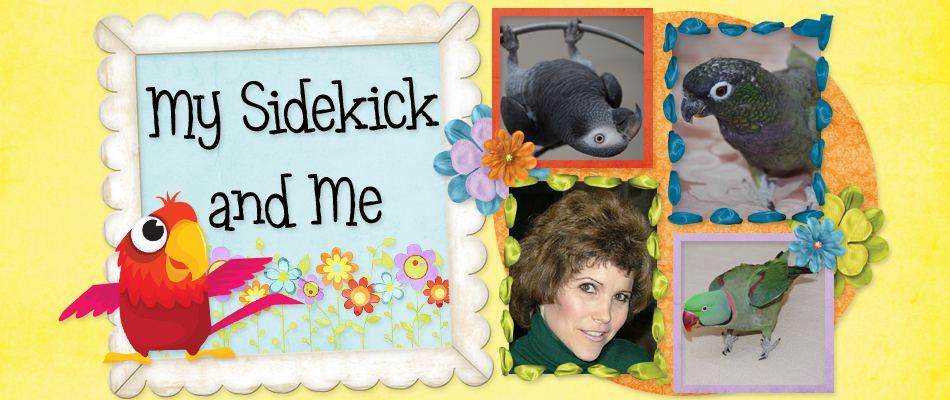I was asked that very question not too long ago by someone whose beautiful companion loves shoulder-eye views of the world. She was warned, as I’ve heard so often, that she shouldn’t be allowing her bird on her shoulder because her pet will think he’s dominant and may likely bite her. I’m not sure where this originated but I thought I’d shed some insight I learned from respected behaviorists and trainers.
So, what is this height dominance theory, really?
Well, Steve Martin, renowned trainer and president of Orlando-based Natural Encounters, wrote about it in a paper actually. “To put it bluntly,” he said, “height dominance does not exist in parrots.”
Yep, if you talk to those in the know – ornithologists, field biologists, and wild bird behaviorists -
there is no such thing as an alpha parrot. Aggression between wild parrots is brief, and a parrot that loses in one confrontation may very well win in the next.
A frustrated bird owner may question that. “Well, of course my bird gets dominant when he’s up high. He bites me every time I try to pick him up from somewhere high,” that person may ask.
My response to that? Let’s do a little behavior analysis and look at a scenario that bird owners frequently use as an example of their pet showing ‘dominance’. Barney – a macaw – is on top of his cage playing with a toy when his owner, Suzy, needs to put him into his cage. She reaches for him and when he steps up, ‘without any warning’ (as is often described) he nails her.
Let’s look at some potential things that could be coming into play here.
• Birds are more comfortable stepping up. However since Barney is up high, unless Suzy gets on a chair, more than likely he is needing to step down to her and may even catch his long tail on the cage. Not very fun for Barney.
• Barney was perfectly happy playing with his toys. His past experience of stepping up for Suzy when he’s playing with his toys is that the consequence of his stepping up means he goes into his cage more often than not. And being inside that cage is just not as fun as being on top of it. (He’s at least taken away from doing something that he was enjoying doing.)
• Before Barney actually bit Suzy, he tried to show her he didn’t want to step up by pinning his eyes or other body language but she ignored or didn’t pay attention to it. Therefore biting her is the only behavior he can do to get the message across that he really does not want to step up at this time.
So, now, is this really a case of height dominance or is the bird simply behaving to escape something negative from the bird’s point of view?
Now back to the original question. Is it okay to wear your bird on your shoulder?
Well, there are a number of factors to take into consideration with regard to that decision. None of them have to do with height dominance.
• What is your relationship with your bird? Does your bird reliably ‘step up’ onto your hand?
• One problem with having your bird on your shoulder is that you can’t see his body language. Therefore you can’t effectively allow your bird to communicate a fear or aggressive response, thus you may be setting both of you up for a possible bite.
• Another consideration is that, while it’s fun companionship to wear shoulder birds it’s healthy to offer a variety of enriching activities for your pet that encourage independent play, foraging, and more. Encouraging your bird to stay perched in one place for long periods of time limits the time he could be learning and playing in different ways.
Right now I only allow Barnaby on my shoulder. Dreyfuss is my hand bird. While both of my birds are fairly fluent in ‘step up’ (Barnaby much more so than Dreyfuss, although she’s getting better), Barnaby has a much more predictable calm behavior than Dreyfuss. It’s not so important for me to keep an eye on Barnaby’s body language. However, Dreyfuss can be a little on the unpredictable side. It’s very important for me to watch her body language as I have her ‘step up’, therefore it is not a good idea for her to perch on my shoulder.
When I had Chester, he and Barnaby were always my ‘shoulder’ birds and Dreyfuss’ place was on my hand. (When you carry three birds around the house, you have to be creative.) So, my hand is where she got used to being and I think I’ll keep it that way.
I do want to just mention that if it is a goal of yours to wear your parrot on your shoulder, a good first goal would be to teach a reliable ‘step up’ behavior.
Tuesday, January 26, 2010
Pet Parrots On Shoulders - Is It Okay?
Subscribe to:
Post Comments (Atom)












0 comments:
Post a Comment